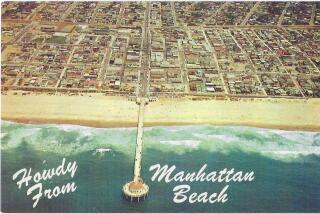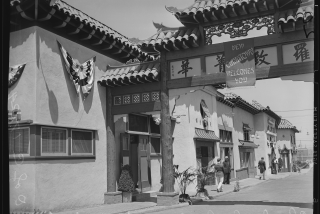Lang Station : Recalling A Forgotten Monument
The tiny Santa Clarita Valley town of Lang, now largely forgotten, played a big part in the development of Northern and Southern California. It was at Lang that the Southern Pacific Railroad line linking Los Angeles to San Francisco was completed in 1876. The line eventually opened Los Angeles up to rail connections with Chicago and New York. The bulk of the railroad was built by thousands of Chinese laborers, who often took on the most challenging and dangerous jobs. After laying track across the San Fernando Valley, the workers faced the monumental task of boring a tunnel through more than a mile of solid rock in the San Gabriel Mountains. The San Fernando Tunnel they dug, just south of Newhall, was crucial link in construction of the railroad.
These days it’s difficult to find Lang on a map, but in the days when rail travel was replacing the stagecoach and Pony Express, Lang was bustling train depot. Cattle rancher John Lang founded the town and built a hotel and spa next to the station, which served as a shipping point for cattle, ore and grain. The buildings are long gone; all that’s left on the site is a historic marker.
By Land by Sea The rail line cut travel time between Los Angeles and San Francisco, which was slow and often difficult, to one day. A comparison of three methods of travel in hours: Train: 10 Boat: 70 Stagecoach: 90
Lang Monument Lang Station was built in 1875 and burned down in a brush fire 12 years later. It was rebuilt and torn down when passenger service ended in 1971. Today it is a state historic landmark and monument that reads: “On September 5, 1876, Charles Crocker, president, Southern Pacific Railroad, drove a gold spike here to complete his company’s San Joaquin Valley line, first rail connection of Los Angeles with San Francisco and transcontinental lines.”
A Golden Finish On Sept. 5, 1876, trains bearing dignitaries from Los Angeles and San Francisco converged on Lang Station to celebrate the linking of California’s two major cities by rail. Southern Pacific President Charles Crocker drove the final spike, which was made of gold, officially finishing the historic rail line. On Sept. 5, 1926, the scene was re-created (above) to commemorate the 50th anniversary of the line’s completion.
San Fernando Tunnel Before the railroad, traveling by wagon or coach between the San Fernando and Santa Clarita valleys required a steep journey over the San Gabriel Mountains. Some facts on the tunnel dug through the mountains: Length: At 6,940 feet, it was the third-longest tunnel in the nation and fourth-longest in the world at the time of construction. Size: 22 feet high, 16 feet wide. Construction: Required more than a year to complete, from March, 1875 to July 1876. Workers: Two crews of several thousand Chinese laborers, paid $1 a day. Cost: $2 million. How it was built: Using picks, shovels, drills and explosives, the two crews of laborers worked on each side of the hill, eventually meeting in the middle. When the crews met, their tunnels were off by only half an inch. The tunnel caved in on a number of occasions during construction, killing or injuring a number of workers. Opening date: First steam engine passed through on Aug. 12, 1876. Current uses: Metrolink line between Santa Clarita and Union Station; Southern Pacific freight trains. Two crews dug through rock at both ends, working towards middle. Shafts were dug to provide air and transport debris.
More to Read
Sign up for Essential California
The most important California stories and recommendations in your inbox every morning.
You may occasionally receive promotional content from the Los Angeles Times.









